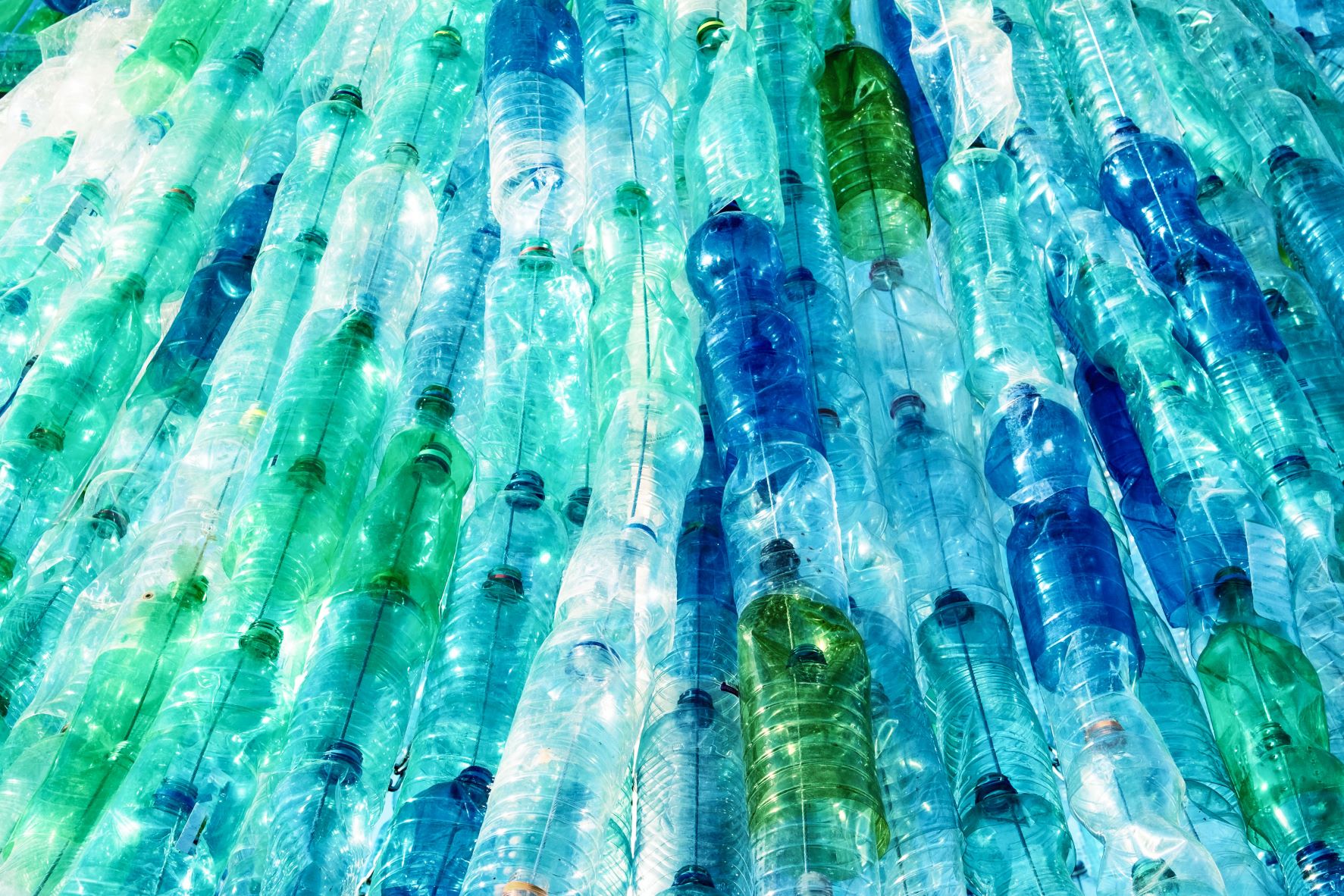Optimizing the use of resources by recovering, enhancing, reusing and recycling them. This has been the mission of Tomra, the Norwegian giant of the circular economy with offices and branches all over the world, from Europe to the Americas, from the Middle East to Asia, from Africa to Australia, for the last 50 years.
If one of the multinational's core businesses has always been the collection of used packaging, through the many reverse vending machine solutions designed and installed in over 60 international markets, 20 years ago Tomra diversified its activities into various branches, including sorting technology for recycling. In particular that of plastic, which together with the climate can be considered the greatest environmental challenge of recent decades.
A challenge that the Norwegian company faces with innovation and ambitious goals. Renewable Matter spoke about this with the young global manager of Tomra Recycling's plastics segment, Alberto Piovesan, whom we met in Milan on the occasion of GreenPlast 2022.

You are leading Tomra Recycling’s Plastic Segment. Quite a great responsibility…
Yes, "great" in the true sense of the word! It's an exciting and very important challenge. I joined Tomra three years ago with the aim of increasing the focus on plastics, especially the sorting of flakes by polymer type and color. Tomra has always been strong particularly in the pre-sorting segment, as well as in the reverse vending sector, which has been its core business from the start and enables the collection of beverage containers through reverse vending machines, therefore promoting clean loop recycling of those.
Together they make a real impact.
To put the plastics issue in context, the first thing is data. How much plastic is actually recycled today, in Europe and globally?
Giving precise numbers is difficult. The percentage that is most often quoted worldwide is around 9% of plastic collected for recycling, but the situation is constantly evolving and the lack of homogeneity in measurement systems between countries must also be taken into account. And in any case, the point is that, whatever the quantity measured, it's not enough and more and better needs to be done.
From the data we at Tomra have available, we know that 86% of plastic is not collected for recycling. 32% doesn't even go to landfill, but ends up dispersed in the environment: an enormous and dramatic percentage. 14% is sent to incinerators or waste-to-energy plants, while 40% ends up in landfills.
Approximately 14% is instead collected and recycled, but only 2% enters a close-loop system, that is, a perfect circular economy. All the rest is down-grading: for example, a bottle is transformed into something else, preventing the creation of a closed cycle in the supply chain.
As an impact leader, Tomra set itself the goal to collect 40% of post-consumer plastic packaging for recycling and to recycle 30% of the post-consumer plastic packaging in a closed loop by 2030. It's ambitious, but we have the technology, the will to do it, and the sense of responsibility. If everything helps, we should get there.
Tomra has often stated that it is working toward achieving a holistic waste management system. What is meant by this?
Once a product has been used and discarded, it must be effectively collected, sorted and recycled. There are three collection methods that make up the Holistic Resource System (HRS) and help to maximize resource recovery. Deposit Return Systems (DRS) have proven to achieve exceptionally high collection and recycling rates for beverage containers. This is vital for bottle-to-bottle recycling. Separate collections for glass, paper, e-scrap, textiles and organics reduce contamination of material streams to make recycling more effective. Plastic packaging must not necessarily be collected separately because it can be recovered from a mixed waste stream. Thanks to mixed waste sorting, the third pillar of the HRS, more plastics can be recovered from household and municipal solid waste and be recycled into virgin-like feedstock.
Implementing this concept in countries where no waste management infrastructures exist or which are rather weak, enables to decrease the CO2 footprint, to recover more material for recycling and therefore meet EU quotas. In total, the introduction of this concept would allow us to save 2.76 billion tons of CO2 by 2030.
It was precisely on mixed waste that the research published a few months ago by Tomra and conducted at an experimental facility in Norway focused. The data showed that the selection of plastic from mixed waste can give better results than separate collection. Could this be the basis for revolutionizing our collection systems?
With that plant we reached a recovery rate of 83%, starting from 28% in the initial situation.
Clearly there are countries that already have an excellent system of separate collection and they work well in this way. But with our technology and the business case in Norway with Ivar IKS, we demonstrate that it is possible to recover recyclables from mixed waste while reaching higher recovery rates. In short, there's no excuse for not recovering and recycling materials.
What are, today and in the near future, the main challenges in the field of plastic recycling?
Plastic recycling is now the key link to truly entering the circular economy. But virgin materials are currently still cheaper than recycled plastic – a trend that does not provide enough financial incentives. So unless you can get a high-quality recycled material that is competitive with virgin feedstock, you will never trigger economies of scale.
There are also laws that require the material to have certain characteristics. For example, PVC must be eliminated from PET bottles because it can generate benzene and toxic components when heated during extrusion. If the pvc is not eliminated, the recycled plastic cannot be used to produce new bottles.
Being able to purify the flake to the point of making it suitable for extrusion (during which further purification takes place) is therefore fundamental.
Today, the process is also beginning to extend beyond PET: polyolefins, PVC and various technical polymers that do not have anything to do with food are beginning to be processed, but are important for other sectors, such as electrical and electronic appliances, which require very high quality raw materials. In the future, which in my opinion is very near, we will be able to offer secondary raw materials for these sectors as well, provided that the recycled plastic is purified to a high level before extrusion. An ennoblement of recycled material that Tomra's technologies can certainly help to achieve.
What are the other "hot" spots to watch for in the coming years?
It's a sparkling time for the materials market, for various reasons. The increase in energy costs - also due to the international crisis - is pushing demand in alternative directions. The European directives on the circular economy, on the other hand, had already started the propulsive motion in the recycling sector, pushing all the players in the industry to commit to recycling more and better. In addition, there is increased consumer awareness, which is pushing marketers to include green credentials in their products.
All of this translates into an increased demand for recycled material and therefore more competition to secure the feedstock needed for production. This leads to the need to widen the choice: while previously only accepting material with a certain degree of purity, they are now starting to draw from, shall we say, less clean sources.
The main challenge at the moment is therefore an increase in input contamination. The difficulty, therefore, is in achieving higher and higher purity levels, as required by the market, but with a "dirtier" material. It's a great technological challenge, which Tomra faces both on the pre-sorting and flake-sorting sides, with our ever-evolving technologies. There will be new technological and process innovations that will allow us to obtain more and more quality from an increasingly less pure input.
Another challenge is increasing throughput: the more demand there is for recycled material, the greater the capacity of each recycling line must be.
In short, high purity, higher throughput, but with worse input materials: it's the perfect storm. To face it, the best thing to do is to invest in innovation. At Tomra, we certainly don't have a crystal ball, but we do have 50 years of experience and a very wide range of technologies that allow us to understand in advance what the trends and demands of the market will be. In the coming years and months, we will be launching a number of innovations in the field of technological and process innovation, as well as in applications, in order to respond better and better to the various requests we receive.
We have a vision and a mission: every machine we manage to install is a small step towards a more efficient recycling system.
Image: Shutterstock



